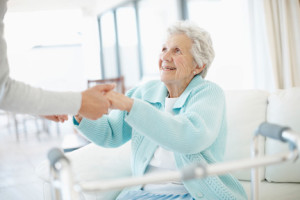First Step In Preventing Senior Falls is Most Overlooked
 Determined to do all they could to keep their elderly mother from falling, Mrs. Smith’s family introduced new tools to keep her steady. They purchased a new walker, which helped their mother to walk straighter. They purchased a newfangled chair alarm, which was supposed to prevent falls by alerting Mrs. Smith’s caregivers when she moved too suddenly. But her falls only increased.
Determined to do all they could to keep their elderly mother from falling, Mrs. Smith’s family introduced new tools to keep her steady. They purchased a new walker, which helped their mother to walk straighter. They purchased a newfangled chair alarm, which was supposed to prevent falls by alerting Mrs. Smith’s caregivers when she moved too suddenly. But her falls only increased.
“Rule number one in preventing falls is to know your loved one and learn from them,” says Janie Benton, director of clinical services for Carillon Assisted Living. “Though well-meaning, the new tools this family put in place only made her less comfortable. The discomfort caused pain, and the pain caused her to fall more frequently.”
Mrs. Smith returned to using her old walker. Her family discontinued use of the chair alarm. Her caregivers reviewed her medication, and reduced the amount of duragesic pain relief she was receiving through medicated pain patches. Over time, she adjusted well to the lower dosage, and felt more steady on her feet as a result.
The lesson we can all learn from the Smiths, according to Benton, is to listen and learn from the person who is experiencing repeated falls.
Benton trains nurses at each of Carillon’s assisted living and Alzheimer’s care communities to look out for the medical issues and environmental factors that are most likely to cause falls in seniors. They include:
- Medications that can cause lightheadedness
- Heart issues that lead to rapid heart rate
- Low blood pressure
- Vertigo
- Vision changes, or limited vision
- Arthritis
- Weakness from acute or chronic illnesses such as COPD
- Urinary tract infections
- Shoes that are too big or too small
- Toenails that are not trimmed
- Clutter that makes it hard to navigate
- Area rugs not secured to the floor
- Ill-functioning wheels on walkers
Posted in Fall Prevention, Resources Tagged elderly fall prevention on March 20, 2014
